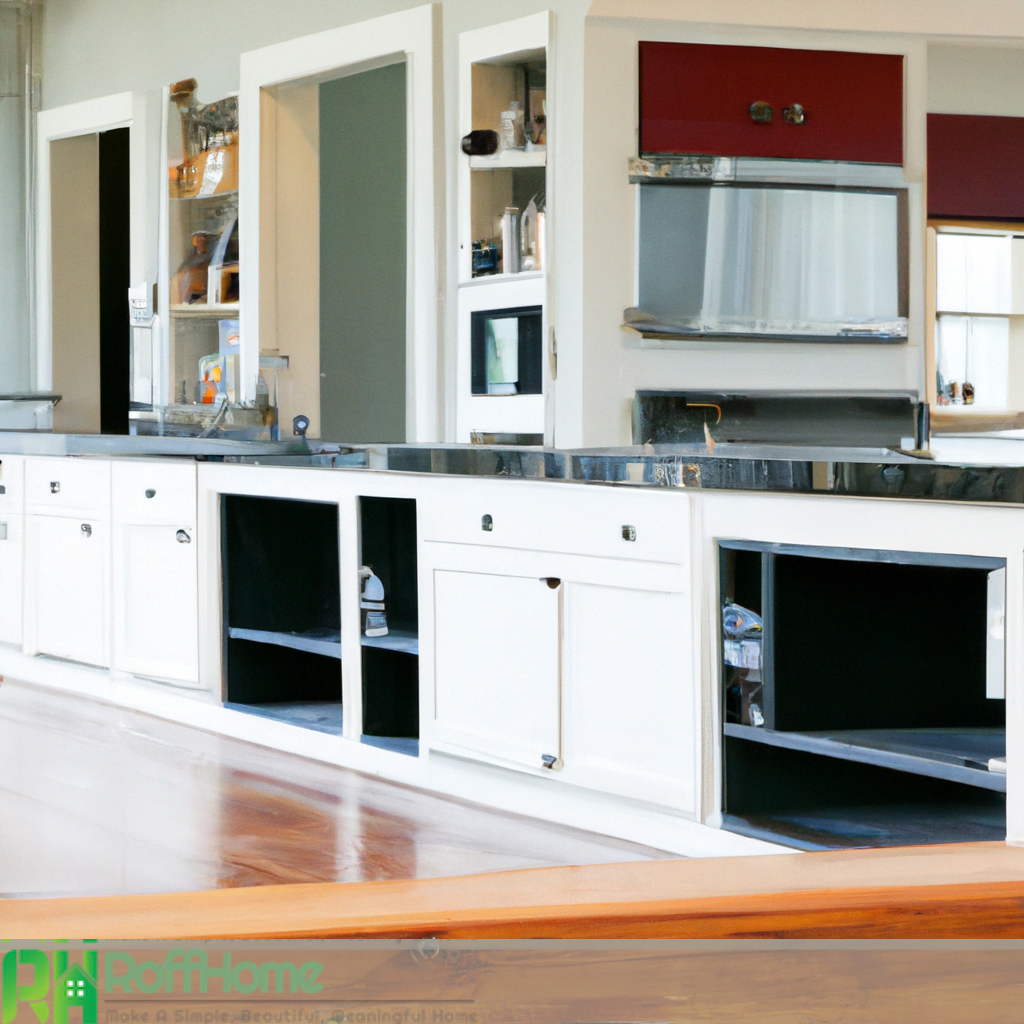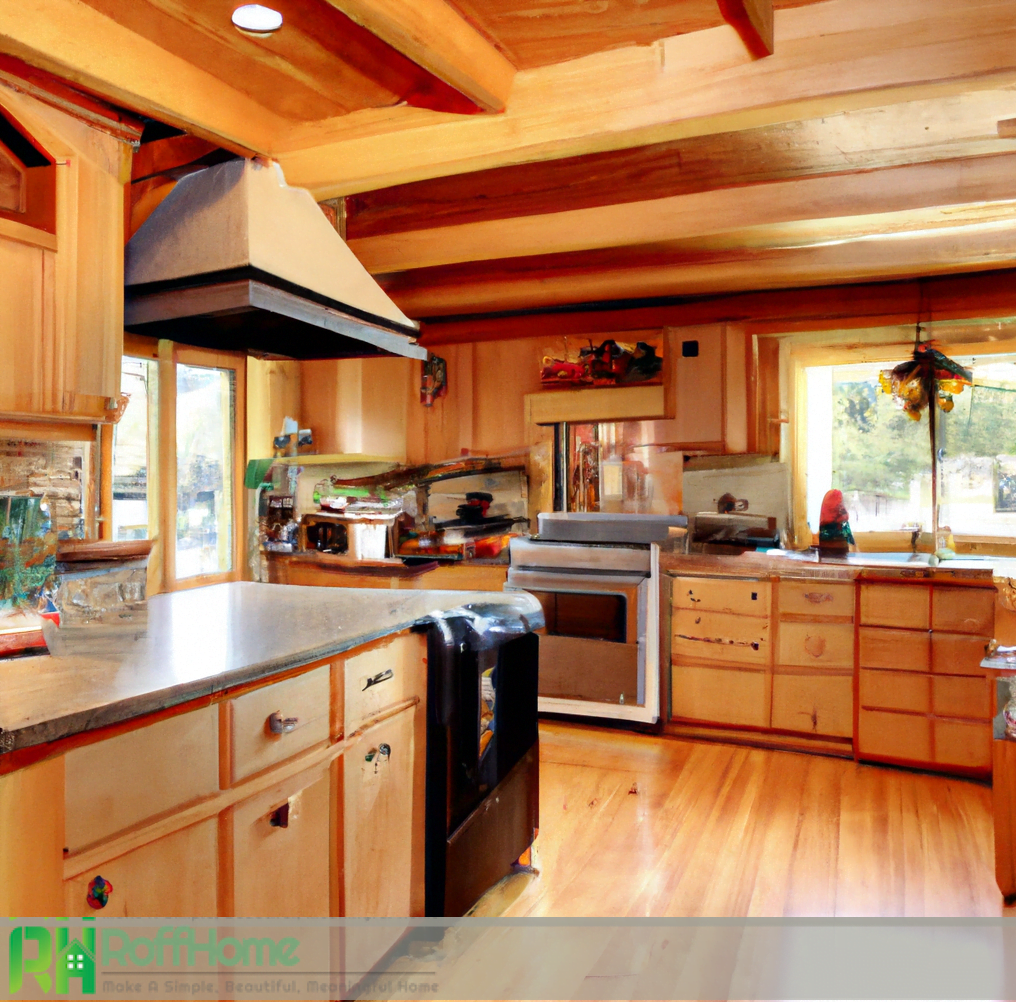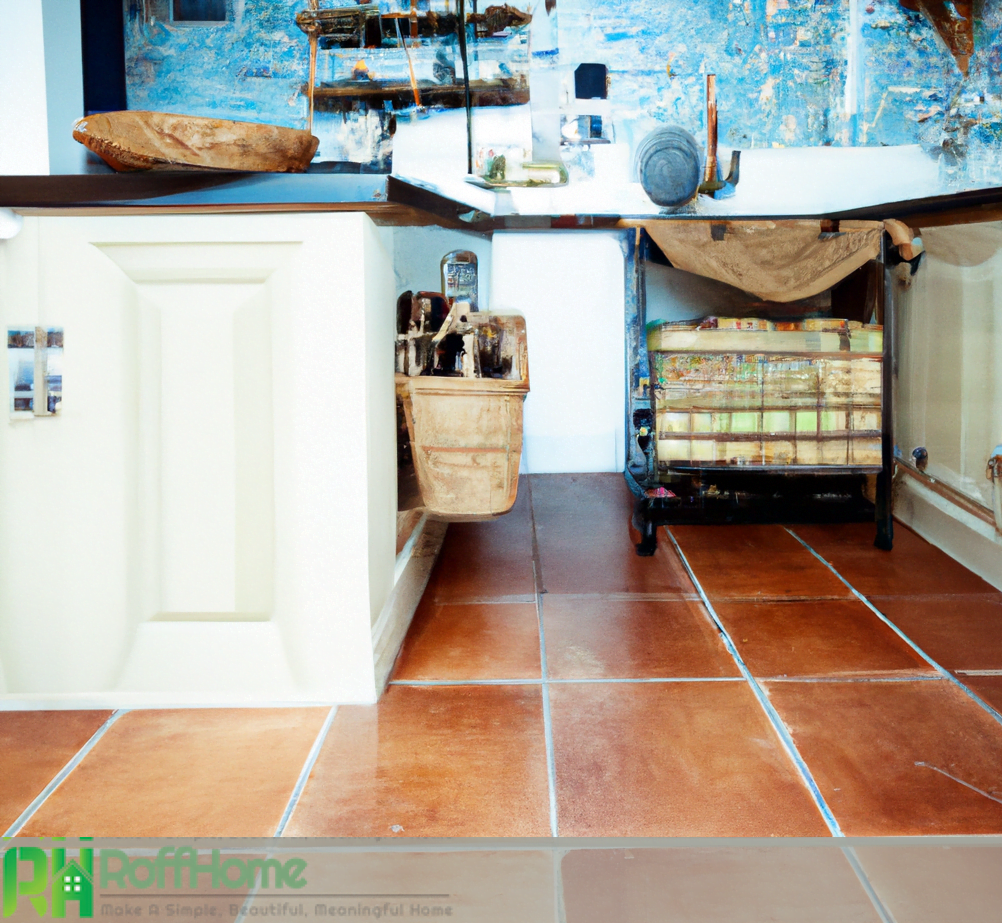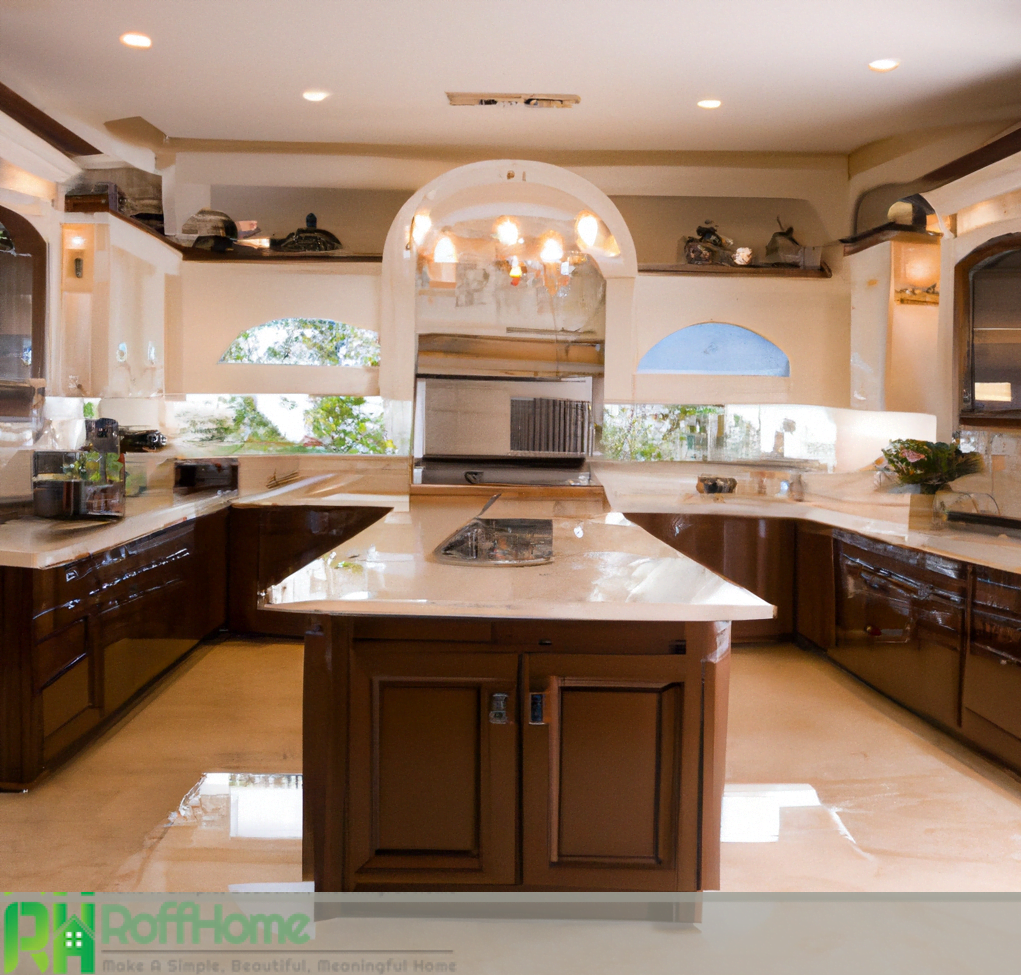Unleashing the Charm of White Rustic Kitchens: Designs and Décor Ideas

The white rustic kitchen is a timeless and versatile design style that combines the charm and character of rustic interiors with white’s clean and classic appeal. This style of kitchen design is characterized by its use of natural materials, such as wood and stone, and its incorporation of rustic elements, such as distressed cabinetry, weathered accents, and charming lighting fixtures. The overall aesthetic is one of warmth and comfort, making it an ideal choice for homeowners looking to create a cozy and inviting atmosphere in their kitchens.
The white rustic kitchen is a blend of traditional and modern design elements, offering a versatile style that can be customized to suit each homeowner’s individual needs and tastes. Whether you prefer a classic farmhouse style or a more contemporary look, the white rustic can be tailored to meet your specific needs and preferences. White in this design style provides a neutral backdrop that allows other elements, such as the natural textures of wood and stone, to take center stage.
In terms of functionality, the white rustic is designed with practicality in mind. From great storage solutions to efficient work zones, this kitchen style is designed to make life easier and more enjoyable for those who spend time in it. Whether you’re a home cook, a busy professional, or a family with young children, a white rustic can be customized to suit your needs and make your daily life easier and more enjoyable.
The Latest Trends in a White Rustic Kitchens
The Latest Trends in White Rustic reflect homeowners’ current design aesthetic and practical needs. This style of kitchen design is characterized by its use of natural materials, such as wood and stone, and its incorporation of rustic elements, such as distressed cabinetry, weathered accents, and charming lighting fixtures. The overall aesthetic is one of warmth and comfort, making it an ideal choice for homeowners looking to create a cozy and inviting atmosphere in their kitchens.
One of the latest trends in white rustic is incorporating contemporary design elements. This involves using modern materials, such as concrete and metal, alongside traditional rustic elements, such as wood and stone, to create a unique and visually striking kitchen. This combination of traditional and contemporary materials and components is ideal for homeowners looking for a stylish and practical kitchen.
Another popular trend in white rustic is the use of open shelving. This design feature not only provides additional storage space but also enhances the overall aesthetic of the kitchen. Open shelving allows homeowners to display their favorite dishes, glassware, and other kitchen accessories, creating a warm and inviting atmosphere.
Regarding lighting, the latest trends in white rustic are centered around creating a warm and inviting atmosphere. This involves using natural lightings, such as large windows and skylights, and ambient lighting, such as pendant lights, wall sconces, and recessed lighting. These lighting elements are designed to enhance the overall look and feel of the kitchen, creating a cozy and inviting atmosphere.
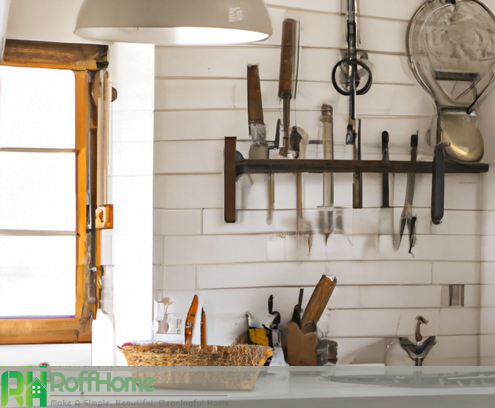
Key elements and materials used in creating a white rustic kitchen
This style of kitchen design is characterized by its use of natural materials, such as wood and stone, and its incorporation of rustic elements, such as distressed cabinetry, weathered accents, and charming lighting fixtures. The following are key elements and materials used to create a white rustic.
Wooden cabinetry: Wooden cabinetry is a staple in white rustic and is often the space’s focal point. Whether distressed, weathered or stained, wooden cabinetry provides a warm and inviting feel to the kitchen. This material is also practical, providing ample storage space and durability.
Stone countertops: Stone countertops, such as marble, granite, and quartz, are commonly used in white rustic. These materials offer durability, resistance to heat and stains, and a natural beauty that complements the kitchen’s overall aesthetic.
Textured accents: Textured accents, such as weathered metal, woven baskets, and natural fibers, play a significant role in creating the rustic aesthetic of a white rustic. These elements add depth and character to the space, creating a warm and inviting atmosphere.
Charming lighting fixtures: The lighting fixtures used in a white rustic should complement the space’s overall aesthetic. This includes using traditional pendant lights, wall sconces, and recessed lighting, which provide both ambient and task lighting. Natural lightings, such as large windows and skylights, is also important in creating a warm and inviting atmosphere.
Tips for designing and decorating a white rustic kitchen
Designing and decorating a white rustic can be challenging, but it can be a fun and rewarding experience with the right approach. This style of kitchen design is characterized by its use of natural materials, such as wood and stone, and its incorporation of rustic elements, such as distressed cabinetry, weathered accents, and charming lighting fixtures. Here are some tips for designing and decorating :
Please choose the right materials: When designing a white rustic, selecting the right materials is key. Opt for natural materials, such as wood, stone, and metal, that are durable and visually appealing. Additionally, consider the texture and finish of the materials you choose to ensure they complement the kitchen’s overall aesthetic.
Incorporate rustic elements: To create a truly rustic look in your kitchen, it’s important to incorporate elements that embody the rustic aesthetic. This includes distressed cabinetry, weathered accents, and charming lighting fixtures. These elements should be incorporated throughout the kitchen to create a cohesive and inviting atmosphere.
Consider functionality: While the design of a white rustic is important, it’s also crucial to consider its functionality. Choose cabinetry and countertops that provide ample storage and workspace, and opt for both practical and stylish appliances.
Add texture: To create depth and interest in your white rustic, add texture through textured accents, such as woven baskets, natural fibers, and weathered metal. These elements help to create a warm and inviting atmosphere in the kitchen.
Incorporate natural lighting: Natural lighting is important in any kitchen design, especially in white rustic. Large windows and skylights are excellent natural light sources and provide a beautiful view of the surrounding landscape.
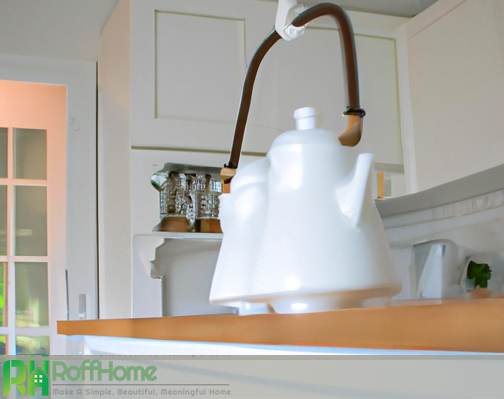
How to blend modern and traditional elements in a white rustic kitchen
Blending modern and traditional elements in a white rustic can create a unique and visually stunning space. This design allows you to incorporate the best of both worlds – the warmth and charm of a traditional rustic kitchen with the sleek and modern features of a contemporary kitchen. Here are some tips on how to blend modern and traditional elements :
Use modern cabinetry: Modern cabinetry, such as flat-fronted, clean-lined cabinets, can provide a sleek and contemporary look in a white rustic. Pair these with traditional elements, such as rustic wood countertops, to create a harmonious balance of modern and traditional.
Incorporate modern lighting: Updating your kitchen’s lighting can significantly impact its aesthetic. Consider incorporating modern lighting fixtures, such as LED or pendant lights, to bring a touch of modernity to the space.
Mix traditional and modern accents: Mixing traditional and contemporary accents, such as a vintage-style wooden table paired with modern stainless steel chairs, can help to create an eclectic and visually interesting space.
Utilize modern technology: Incorporating modern technology, such as smart home devices or energy-efficient appliances, can help to create a more functional and contemporary kitchen.
Choose neutral colors: When blending modern and traditional elements, it’s important to choose neutral colors that will help to tie the pieces together. White, beige, and light gray are excellent choices for a rustic white kitchen.
Add natural elements: Incorporating natural elements, such as wood or stone, can help to bring a touch of nature and warmth to the kitchen. This will also help to create a harmonious blend of modern and traditional elements.
How to achieve a white rustic kitchen look on a budget
Achieving a white rustic look doesn’t have to be expensive. You can create a beautiful kitchen that feels cozy, warm, and inviting without breaking the bank with a few smart shopping and design choices. Here are some tips on how to achieve a white rustic look on a budget:
Paint existing cabinetry: Painting existing cabinets is a cost-effective way to give your kitchen a fresh, updated look. Choose a crisp, white paint color for a clean and classic look that will complement the rustic elements in your kitchen.
Shop for secondhand items: Shopping for secondhand items, such as a vintage wooden table or antique pot rack, can help you find unique, one-of-a-kind pieces for your kitchen. These items will add character and charm to your space and can often be found at a fraction of the cost of new parts.
DIY accents: Consider making your accents, such as a rustic wooden wall hanging or a set of woven placemats, to add a personal touch to your kitchen. These projects can be both budget-friendly and enjoyable to create.
Use inexpensive materials: Choose cost-effective materials, such as laminate or engineered wood, to keep the cost of your kitchen renovation down. These materials can look just as good as more expensive options while maintaining the warmth and charm of a traditional rustic kitchen.
Shop at discount stores: Shopping at discount stores, such as Ikea or HomeGoods, can help you find stylish and affordable pieces for your kitchen. These stores offer a wide selection of home goods at discounted prices, making it easy to stay within your budget.
Consider lighting: Lighting can greatly impact the look and feel of your kitchen. Consider adding a rustic wooden chandelier or string lights for a warm and inviting touch.

How to Choose the Best Color and Pattern for White Rustic
Selecting the right color and pattern for a white rustic is important in creating a cohesive and stylish design. Here are some tips on how to choose the right color and print for your kitchen:
Stick to neutral colors: Neutral colors, such as white, cream, beige, and gray, are a classic choice for a white rustic. These colors will help create a calm and relaxed atmosphere and will not clash with the other rustic elements in your kitchen.
Adding texture to your kitchen can help create a warm and inviting space. Consider using materials, such as stone or wood, that have a natural texture to add depth and interest to your kitchen.
Use pattern sparingly: Too much design can overwhelm a white rustic. Consider adding patterns through accents, such as a patterned backsplash or a set of patterned dish towels, to add a pop of interest without being overpowering.
Introduce pops of color: Consider adding pops of color to your kitchen through accents, such as colorful kitchen appliances, curtains, or a colorful vase. These small touches of paint can bring life and energy to your kitchen while maintaining a cohesive look.
Consider the lighting: The lighting in your kitchen can impact the look and feel of your space. Consider how natural light will interact with your kitchen, and adjust the colors and patterns accordingly.
Think about the overall style:
- Consider the overall style of your kitchen when selecting colors and patterns.
- If your kitchen is more traditional, consider selecting classic and timeless designs, such as plaid or stripes, to complement the style.
- If your kitchen is more modern, consider selecting more contemporary patterns, such as geometric or abstract designs, to complete the class.
Maintenance and care of white rustic kitchen surfaces and features
Maintaining and caring for white rustic surfaces and features is important in keeping your kitchen looking its best for years to come. Here are some tips for maintaining and managing :
Clean regularly: Regular cleaning is important in keeping your kitchen surfaces and features looking their best. Use a mild soap and water solution to clean your kitchen surfaces, and dry them thoroughly to prevent water spots and streaks.
Protect surfaces: Protect your kitchen surfaces from scratches, stains, and other damage using coasters, trivets, and placemats when necessary. Consider using a sealant on porous surfaces, such as stone or wood, to help protect them from damage.
Maintain cabinetry: Regular maintenance of your cabinetry is important in keeping it looking its best. Clean your cabinetry regularly, and consider using a polish or oil to help protect it from damage.
Replace damaged elements: If a surface or feature in your kitchen becomes damaged, consider replacing it to keep it looking its best. This could mean replacing a damaged tile, or a broken cabinet knob, for example.
Repair scratches and dents: Scratches and marks can be repaired with a touch-up kit or by sanding and refinishing the affected surface. Consider consulting a professional if you need help fixing a specific character or feature.
Use appropriate cleaning products: Be sure to use suitable cleaning products when cleaning your kitchen surfaces and features. Avoid using abrasive cleaners, as these can scratch or damage surfaces.
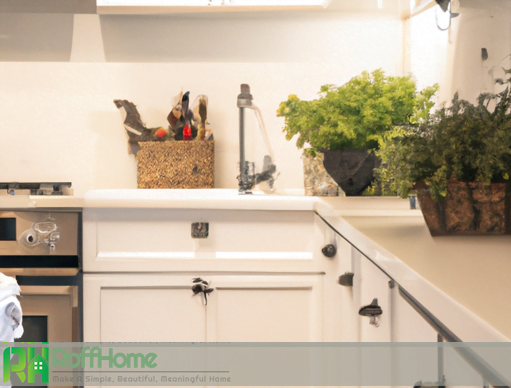
Examples of white rustic kitchens and how they can be incorporated into different home styles
These can be incorporated into different home styles to add a touch of charm and character. Here are some examples of white rustic and how they can be incorporated into different home styles:
Traditional homes: This perfectly fits traditional homes. It adds a warm, cozy feeling to the house and blends well with conventional elements such as wood paneling, cabinetry, and brick accents.
Modern homes: A white rustic can also be incorporated. By incorporating modern elements such as sleek stainless steel appliances and clean-lined cabinetry, a white rustic can add warmth and character to a current home.
Country homes: White rustic are often found in country homes, blending in well with the natural surroundings. Consider incorporating elements such as a farmhouse sink, apron-front cabinets, and barn-style doors to add a touch of country charm to your kitchen.
Coastal homes: A white rustic can also be incorporated into seaside dwellings, where it can add a touch of beachy charm. Consider incorporating elements such as weathered wood, coastal-inspired accents, and natural stone to create a beachy feel in your kitchen.
Industrial homes: A white rustic can also be incorporated into industrial dwellings. Consider incorporating elements such as metal accents, concrete countertops, and exposed ductwork to create an industrial feel in your kitchen.
Benefits of having a white rustic kitchen in terms of functionality and aesthetics
Having a white rustic provides numerous benefits in terms of functionality and aesthetics. Here are some of the key benefits :
Functionality: A white rustic provides a functional and efficient workspace, as the light color of the cabinets and walls helps create an open and airy feel. The combination of rustic elements, such as natural wood accents and textures, can add warmth and character to the kitchen.
Aesthetics: A white rustic creates a warm, inviting, and cozy atmosphere, making it the perfect place to gather with family and friends. The combination of white and rustic elements creates a unique and charming look that is timeless and classic.
Increased home value: A white rustic kitchen is a popular and desirable design trend, which can help increase the value of your home. This kitchen style is appealing to potential buyers, as it provides a warm and inviting space that is both functional and beautiful.
Customization options: White rustic are highly customizable, as there are numerous ways to incorporate different elements and materials to create a unique look. From cabinets to flooring, there are various options to choose from, allowing you to create a kitchen that reflects your style.
Easy maintenance: White rustic are also easy to maintain, as the light color of the cabinets and walls helps to hide scratches and scuffs. Using natural materials, such as wood and stone, adds durability to the kitchen and makes it easy to keep clean.
The disadvantage of having a white rustic kitchen is functionality and aesthetics
While there are many benefits of having a white rustic, there are also some disadvantages to consider in terms of functionality and aesthetics. Here are some of the key weaknesses o:
Maintenance: White surfaces, such as cabinets and walls, can be prone to showing stains and spills more easily than darker colors. This can make it more challenging to keep a white rustic looking clean and fresh.
Light sensitivity: White surfaces can also be more sensitive to light, resulting in fading or discoloration over time. This makes it important to choose materials and finishes resistant to fading and light exposure.
Cost: Creating a white rustic can be more expensive than other kitchen styles, as it often involves using high-quality materials and finishes. For example, custom cabinetry, natural stone countertops, and premium lighting fixtures can all add to the cost of creating a white rustic.
Limited design options: While white rustic are highly customizable, there are limits to the design options available. For example, white surfaces and rustic elements may not work well with all home styles or personal preferences.
Difficulty with blending with other design styles: While a white rustic can be charming and appealing, it cannot be easy to incorporate into different design styles. This can make it important to consider the overall aesthetic of your home when choosing a white rustic.
A white rustic kitchen combines the warmth and charm of rustic elements with the clean, crisp look of white surfaces. This kitchen style offers a range of benefits, including increased functionality, improved aesthetics, and a warm, inviting atmosphere. However, it’s important to consider the maintenance, cost, and design limitations before incorporating a white rustic into your home.

